Written by NCEA Staff
I was once asked if I was a head person or a heart person. I didn’t understand the question and when asked what that meant was told a head person always thinks with their mind first, and a heart person always goes with their feelings first. Hmmm….my first thought was, I’m definitely a head person. I love you, but prove it is my go-to response to multiple situations. However, there were just as many times when I could identify I acted with my heart first.
My answer was (and still is) it’s based on context which direction I lean into, but I always have access to both. If I am focusing on teaching a child a skill, I’m going to lean into my head side. If I am helping a child who fell and scraped their knee on the playground, I’m going to lean into my heart side. Real life isn’t always as simple as my examples and the person who asked me was talking about faith, but my answer remains the same, it depends on the context. We need both. We use both. Perhaps we need to pay attention to context.
So it goes with today’s topic. Does data about academic performance make a difference? To answer that, I am going to lean into my head side, however, I’m never going to forget that in our Catholic schools we focus on the whole child, so no matter what I say about data, it isn’t the whole picture of any child. We need both the head and the heart to help every child maximize his or her God given gifts and talents.
Let’s take a look at data from a national perspective. Every year, the National Assessment of Educational Progress (NAEP) assesses our children in a variety of areas, with literacy in reading and math being key indicators of the health of the nation’s schools. Every year they include a nationally representative sample of the performance of subgroups, including Catholic Schools.
During the pandemic, Catholic schools were open as often as possible for families with 92% offering full- time in person and hybrid instruction. And our academic performance mirrors the high value of having full-time in-person and hybrid instruction for the families we serve. Congratulations to everyone who served our families, the data below shows that Catholic schools effectively managed a pandemic, and our scores show the success of our students. Our losses were minimized, and our students are better prepared for academic recovery because of your dedication to their needs.
Our scores are in the charts below. Mathematics for 4th and 8th grade students are shown first, then we have our 4th and 8th grade reading scores. We all should be proud of these scores. Our students did not have the significant drops in performance compared to public schools, and that is extremely important as we move out of the pandemic and into academic recovery.
Now, let’s lean into the data with our head side for a moment. Take a close look at our scores across the graphs. They show how our students performed longitudinally, from 2013-2022. When looking carefully at the long-term success of our students, I noticed something. Our results follow the same longitudinal pattern as our public-school counterparts.
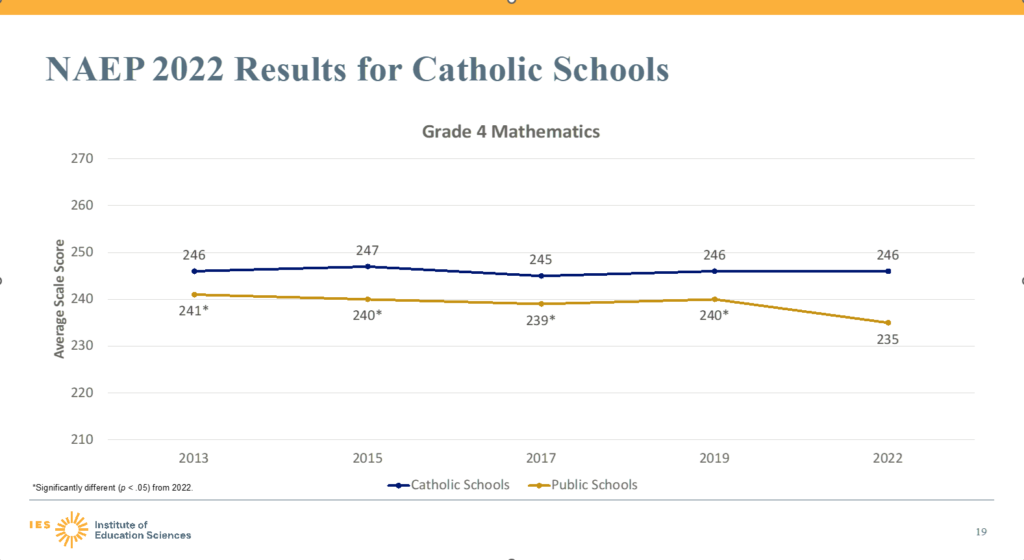
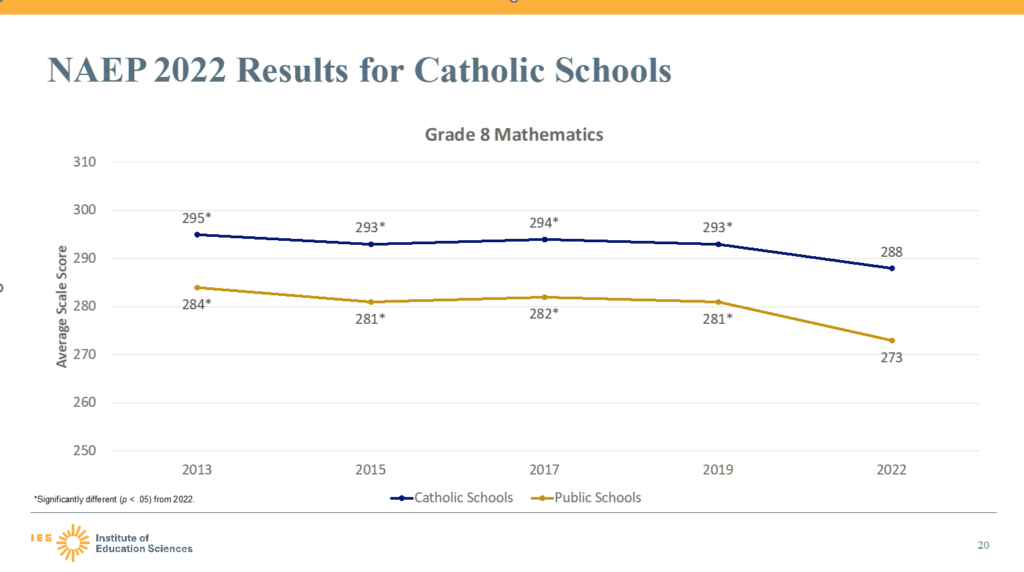
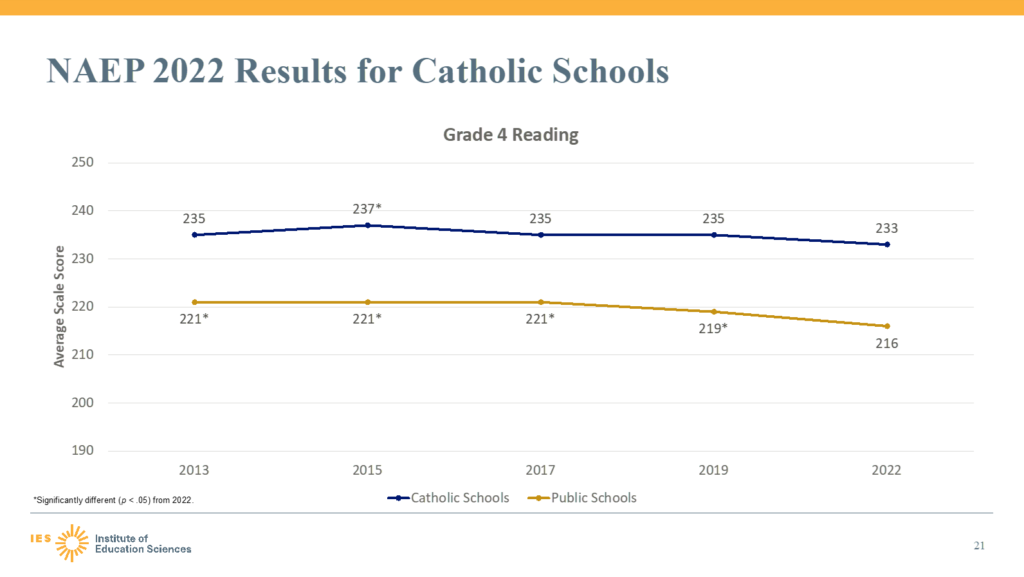
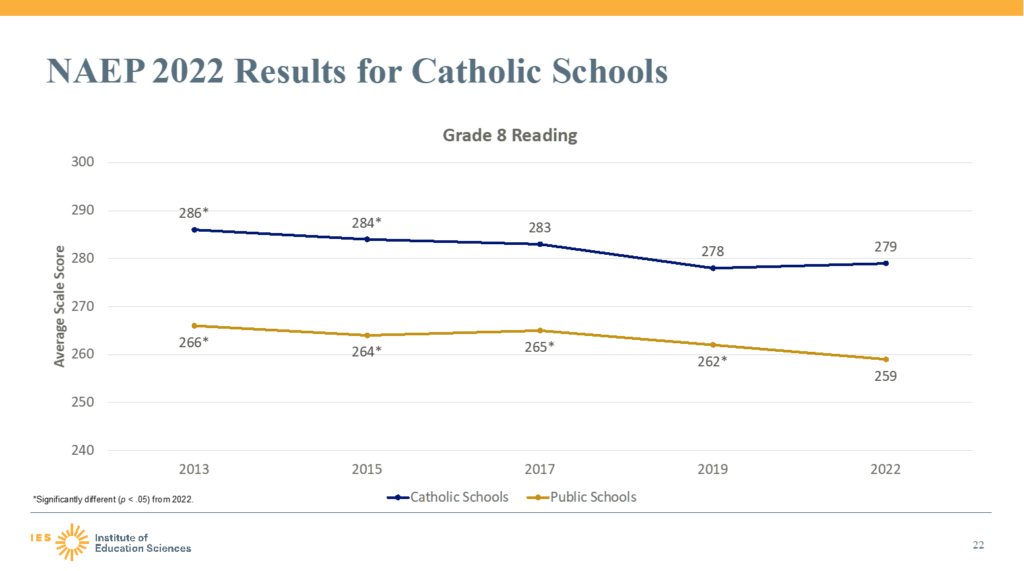
Now, let’s lean into the data with our head side for a moment. Take a close look at our scores across the graphs. They show how our students performed longitudinally, from 2013-2022. When looking carefully at the long-term success of our students, I noticed something. Our results follow the same longitudinal pattern as our public-school counterparts.
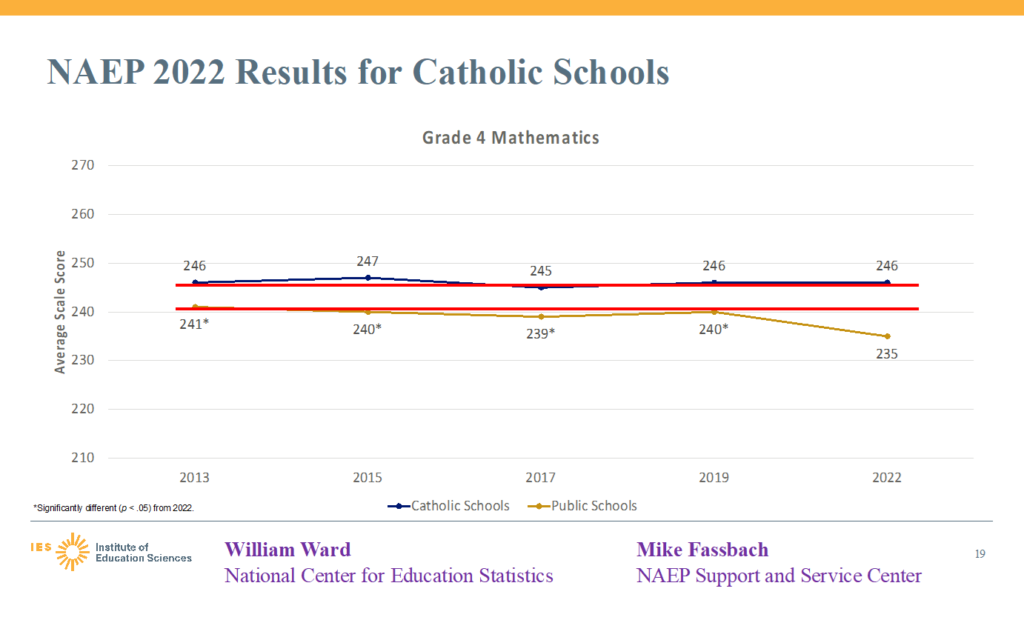
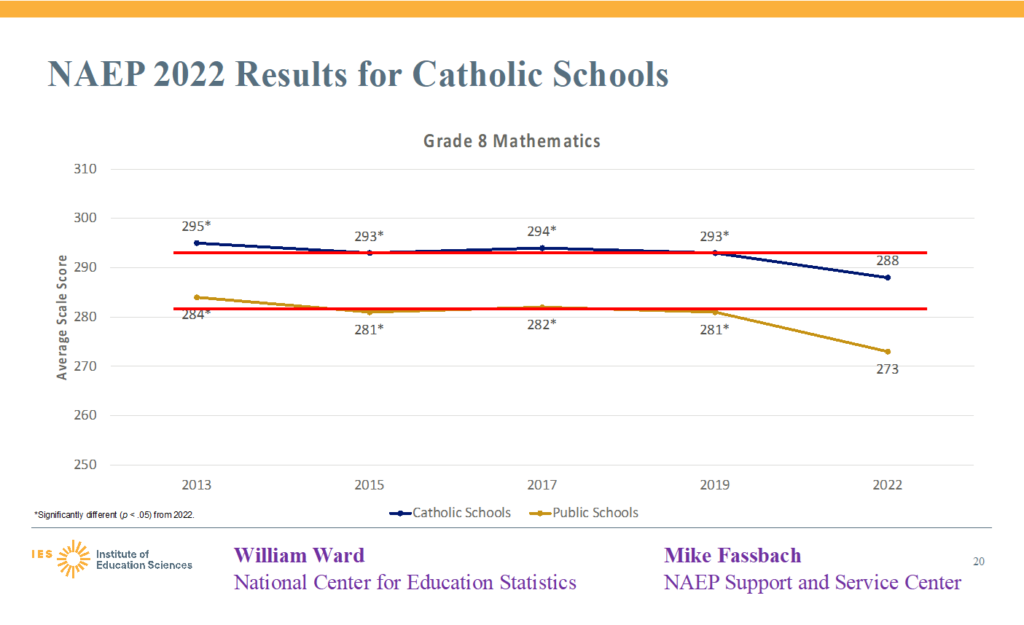
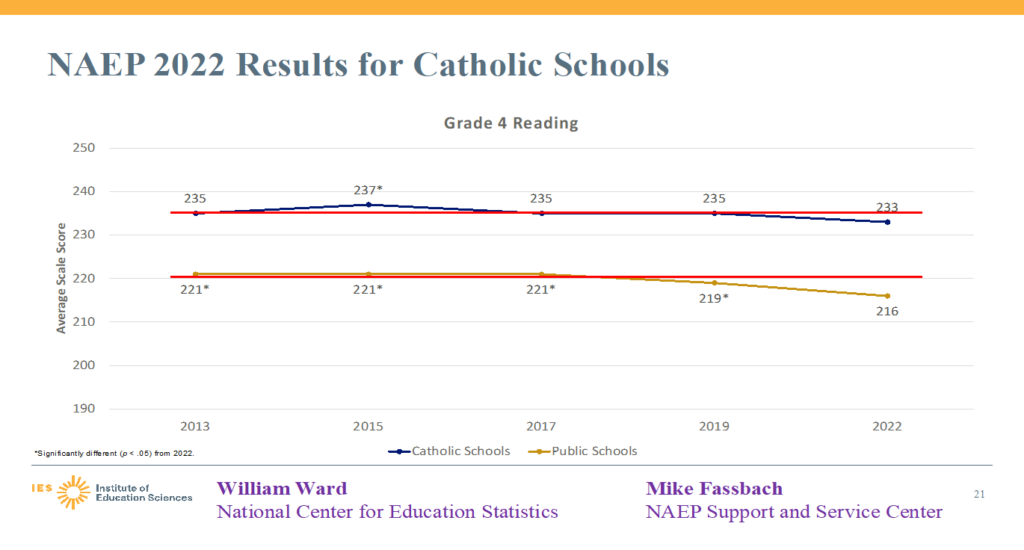
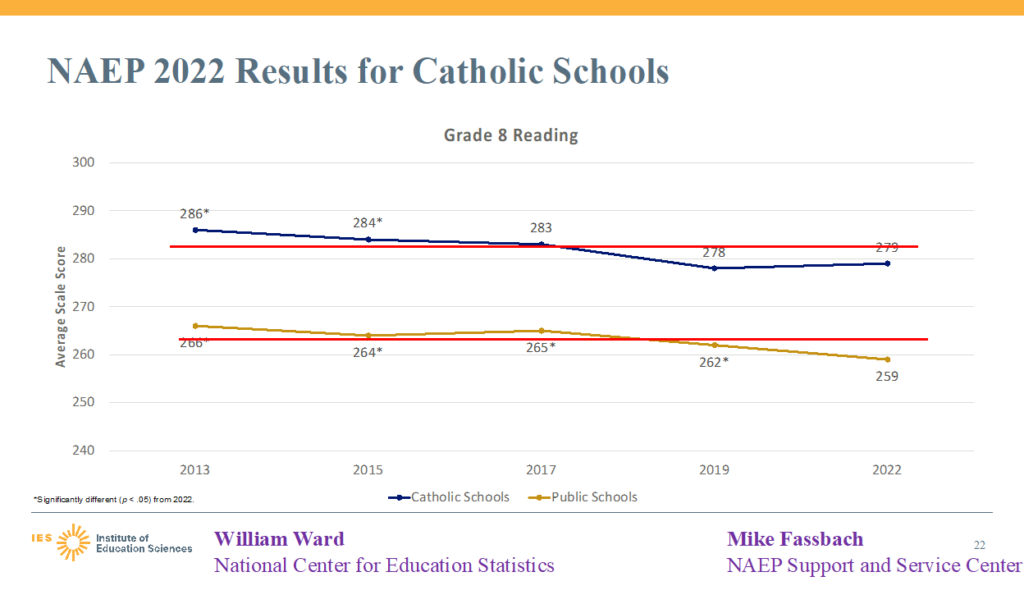
Since 2013, minus the pandemic, we have a similar trajectory…if you were to put a line across both sets of results in each category, they would be flat. So, while our overall performance is consistently higher, there isn’t a steady rise in our own scores over time. I want to challenge each one of us to consider leaning into reading and math to ensure that our children are fully literate in both.
Instead of steady trend scores, it would be amazing to see a rise, even if only a point or two each year from our Catholic schools. Not to compare ourselves to others, but to ensure that we are developing every part of our students’ God-given gifts and talents, including becoming fully literate in reading and math. It can be found within our own documents and is a part of our commitment to both the head and the heart for all our students. As noted in our National Standards and Benchmarks(NSBECS) Document:
In 2005, the bishops noted that “young people of the third millennium must be a source of energy and leadership in our Church and our nation. And, therefore, we must provide young people with an academically rigorous and doctrinally sound program of education” (Renewing Our Commitment to Catholic Elementary and Secondary School is in the Third Millennium, 2005).
So, while we are leaning into academic performance head-first, we always include the heart. Every one of our students is God’s unique creation and we need both the head and the heart to help every child reach his or her God given gifts and talents. Regarding literacy in reading and math, lean in with the side that helps move our students forward.
